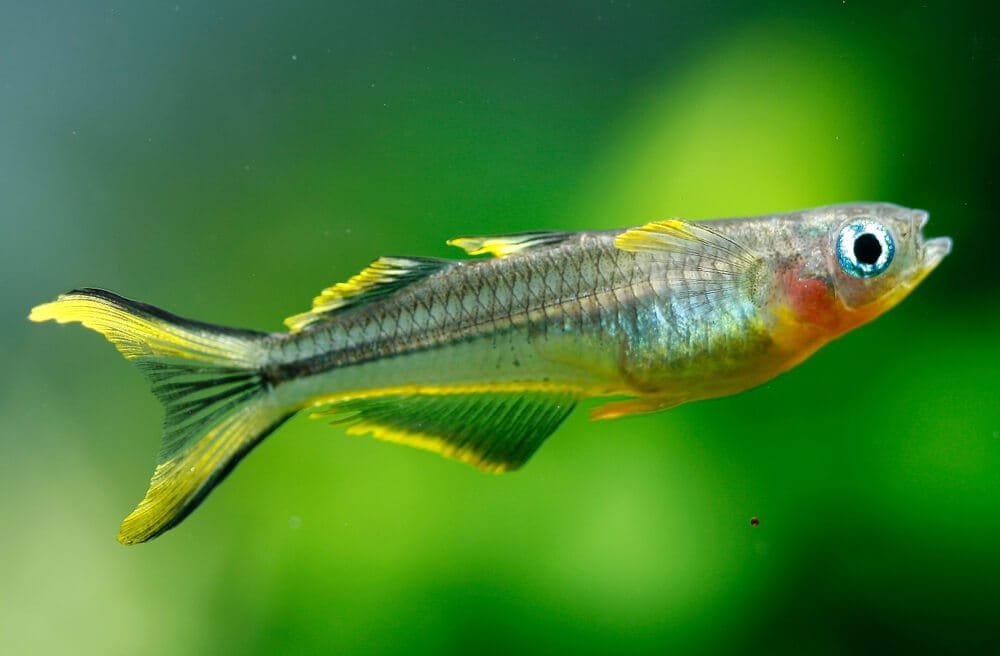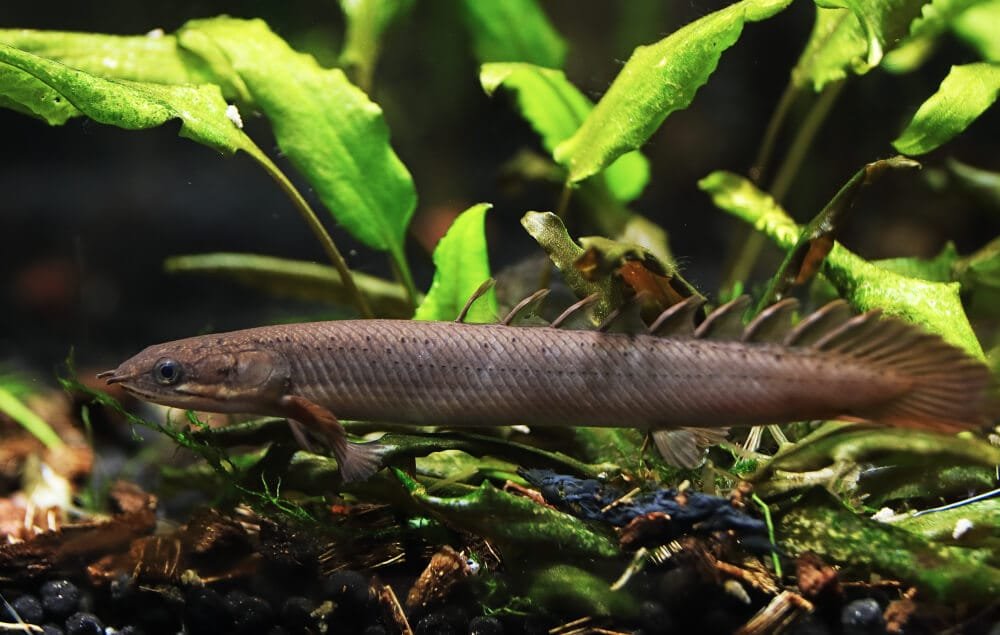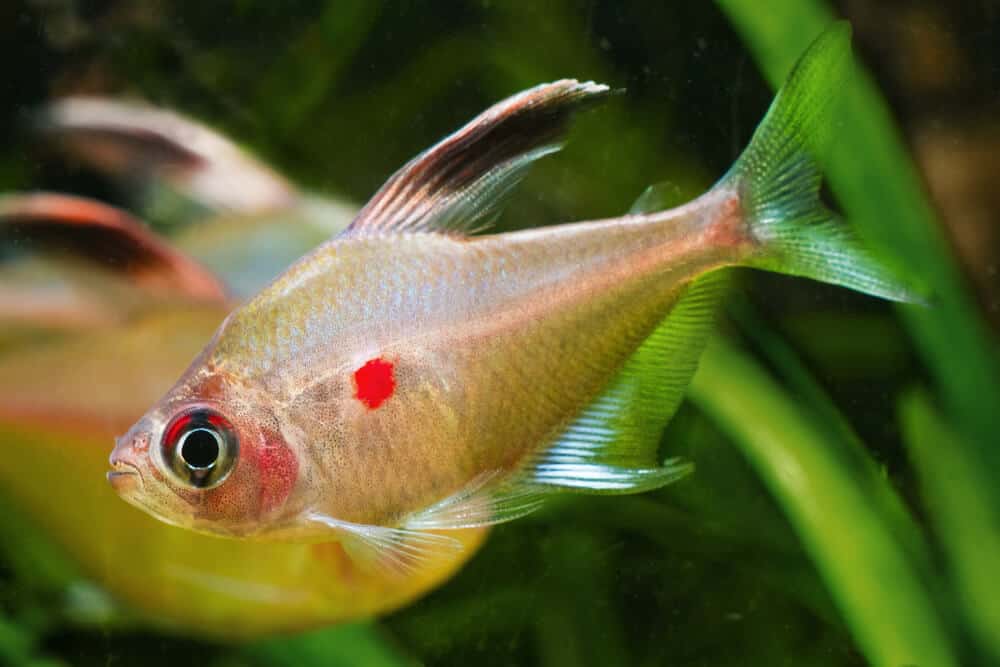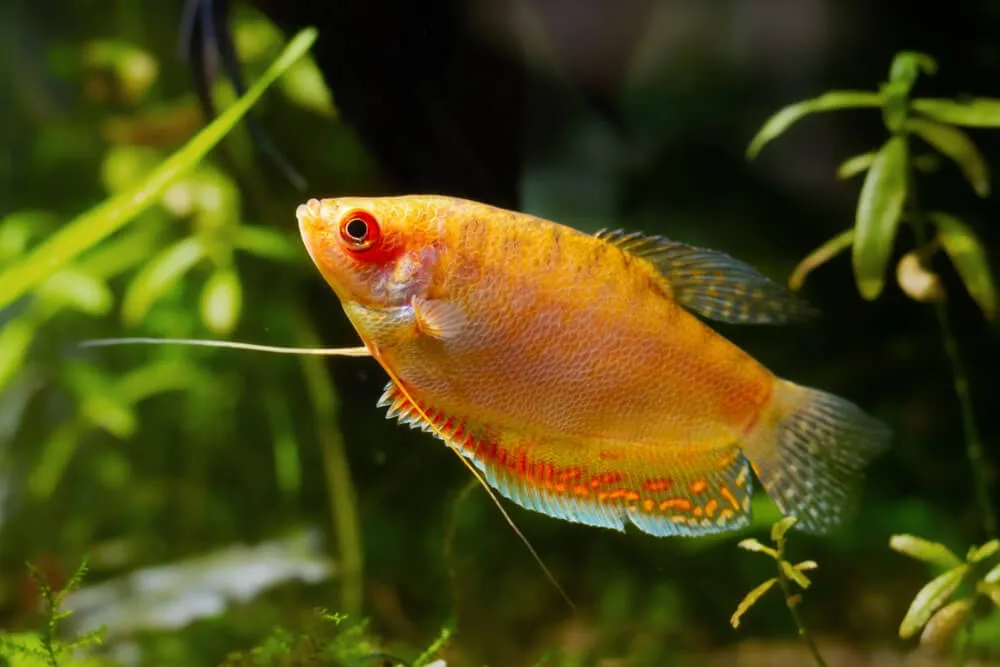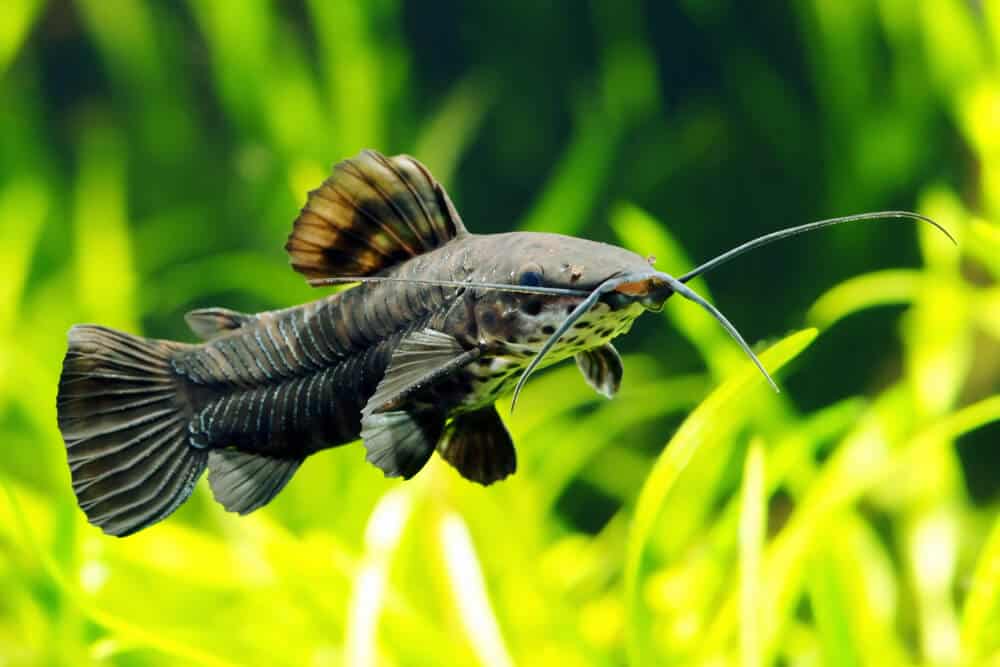Imagine gliding through crystal clear waters, surrounded by a vibrant kaleidoscope of colors. As you explore the depths of a tropical paradise, you come across a mesmerizing creature known as the Forktail Rainbowfish. With its iridescent scales gleaming in the sunlight and a delicate, fork-like tail trailing behind, this enchanting fish is a true spectacle to behold. Its graceful movements and striking appearance have made it a prized addition to aquariums around the world. Delve into the captivating world of the Forktail Rainbowfish as we uncover its unique characteristics and the secrets behind its alluring beauty.
Appearance
The Forktail Rainbowfish is a strikingly beautiful fish with vibrant colors that can instantly catch your eye. With its iridescent body, it boasts a range of colors that include shades of blue, green, yellow, and orange. The scales on its body shimmer in the light, giving it a mesmerizing and captivating appearance. This jewel-like fish also has a slender and elongated body, which adds to its graceful and elegant appeal.
Coloration
The coloration of the Forktail Rainbowfish is truly remarkable. The males are especially stunning, displaying a myriad of colors on their bodies. Their dorsal fin is usually a vibrant blue or green, while their flanks exhibit beautiful shades of yellow, orange, and green. The anal and caudal fins are typically an eye-catching combination of red and blue. In contrast, the females have a more subdued coloration, with their bodies being predominantly silver or pale yellow.
Size
In terms of size, the Forktail Rainbowfish is relatively small, making it suitable for various aquarium setups. It typically grows to a length of around 3 to 4 inches (7 to 10 centimeters). This petite size allows it to maneuver easily in the water and adds to its overall charm.
Habitat
The Forktail Rainbowfish is native to the rivers and streams of New Guinea and parts of Australia. It is commonly found in freshwater habitats characterized by dense vegetation and moderate to fast-flowing water. These fish thrive in environments with plenty of hiding spots, such as submerged roots, rocks, and aquatic plants.
Native Range
The Forktail Rainbowfish is endemic to the island of New Guinea, which is divided between Papua New Guinea and Indonesia. It is also found in certain regions of northern Australia. These areas provide the ideal conditions for the fish to thrive, with their abundant freshwater sources and diverse flora.
Preferred Water Parameters
To ensure the health and well-being of the Forktail Rainbowfish, it is essential to replicate its natural habitat as closely as possible. This includes maintaining appropriate water parameters. The ideal temperature range for this species is between 77°F and 82°F (25°C and 28°C), while the pH level should be maintained within the slightly acidic to neutral range of 6.5 to 7.5. Additionally, it is crucial to provide clean and well-oxygenated water to support the fish’s overall health.
Behavior
The Forktail Rainbowfish is known for its peaceful and sociable demeanor, making it an excellent addition to community aquariums. They are typically found in groups in the wild and exhibit strong schooling behavior, which not only provides them with security but also adds to the visual appeal of an aquarium. These fish are known to be relatively active swimmers and enjoy exploring their surroundings, especially if a well-designed aquarium setup with plenty of hiding places and open swimming spaces is provided.
Schooling Behavior
In their natural habitat, Forktail Rainbowfish form large schools, which serves as protection against predators. They derive a sense of safety and security from being in the company of their peers, so it is recommended to keep them in groups of at least six individuals. A larger group will enable the fish to display their natural schooling behavior more effectively, creating a visually stunning and dynamic display in the aquarium.
Feeding Habits
Being carnivorous in nature, the Forktail Rainbowfish primarily feeds on small aquatic invertebrates, such as insects, larvae, and crustaceans. In an aquarium setting, they readily accept a variety of commercially available foods. It is advisable to provide a balanced diet consisting of high-quality flakes, pellets, and frozen or live foods. Offering a mix of these options ensures that the fish receive all the necessary nutrients for their overall health and vitality.
Reproduction
The Forktail Rainbowfish is an egg-scattering species, meaning that the female releases her eggs in the water while the male simultaneously releases his milt to fertilize them. To encourage successful breeding, it is recommended to create a separate breeding setup within the main aquarium. This can be achieved by using a spawning mop, fine-leaved plants, or a breeding tray with mesh or marbles to protect the eggs. The water temperature should be slightly higher than normal, around 82°F (28°C), and the lighting can be dimmed to simulate the natural breeding conditions. Once the eggs are laid, it is crucial to remove the adults from the breeding setup to prevent them from consuming the eggs.
Tank Requirements
Providing a suitable tank environment is essential for the health and well-being of the Forktail Rainbowfish. While they are relatively small in size, they still require ample swimming space and appropriate water conditions to thrive.
Tank Size
As a general guideline, it is recommended to provide a tank size of at least 20 gallons (75 liters) for a small group of Forktail Rainbowfish. A larger tank size will allow the fish to swim more freely and exhibit their natural behavior. It also provides ample space for aquatic plants and other decor, creating a visually appealing environment.
Water Conditions
Maintaining optimal water conditions is vital for the health and longevity of the Forktail Rainbowfish. The water temperature should be kept within the range of 77°F to 82°F (25°C to 28°C), and the pH level should be maintained between 6.5 and 7.5. Regular water testing and monitoring are essential to ensure these parameters remain stable. Additionally, it is important to provide a filtration system to maintain clean and well-oxygenated water.
Aquarium Setup
Creating a well-designed aquarium setup is not only aesthetically pleasing but also beneficial for the Forktail Rainbowfish’s overall well-being. Adding a variety of live plants, such as Java fern, Amazon sword, and Vallisneria, provides natural hiding spots and shaded areas for the fish. Driftwood and rocks can also be added to mimic their natural habitat and create interesting visual features. Additionally, the use of a sandy substrate is recommended, as it closely resembles the riverbeds and allows the fish to sift through it as they search for food.
Tankmates
When selecting tankmates for the Forktail Rainbowfish, it is crucial to consider their peaceful nature and compatibility with other species. They generally get along with a wide range of community fish, provided they share similar water parameters and have peaceful temperaments.
Compatible Species
Some suitable tankmates for the Forktail Rainbowfish include other peaceful fish species like Tetras, Guppies, Rasboras, and Corydoras Catfish. These species are generally non-aggressive and will create a harmonious community aquarium. It is important to ensure that the tankmates are not significantly larger than the Forktail Rainbowfish, as this could lead to potential predation or aggression issues.
Incompatible Species
It is advisable to avoid keeping the Forktail Rainbowfish with aggressive or fin-nipping species, such as cichlids or barbs. These more assertive fish may cause stress or physical harm to the Forktail Rainbowfish, affecting their health and overall well-being. Also, avoid housing them with larger predatory species that may view the Forktail Rainbowfish as potential prey.
Diet
The Forktail Rainbowfish is predominantly carnivorous and requires a diet rich in protein to thrive and maintain optimal health. While they are relatively unfussy eaters, it is essential to provide a varied and balanced diet to meet their nutritional needs.
Carnivorous Feeding
As carnivores, the Forktail Rainbowfish have a natural inclination towards consuming meaty foods. In the wild, they primarily feed on small aquatic invertebrates. In an aquarium setup, they readily accept a variety of commercially available foods. It is important to choose high-quality flakes or pellets specifically formulated for carnivorous fish species.
Food Options
In addition to dry foods, it is advisable to supplement their diet with frozen or live foods to provide a more diverse and nutrient-rich menu. Some suitable options include bloodworms, brine shrimp, daphnia, and small insects. Offering a mix of these options ensures that the Forktail Rainbowfish receive the necessary vitamins, minerals, and proteins for their overall well-being.
Health Care
Maintaining proper health care practices is vital in preventing diseases and ensuring the longevity of the Forktail Rainbowfish. By following a few key guidelines, you can keep your fish healthy and thriving.
Disease Prevention
To minimize the risk of diseases, it is important to maintain clean and well-maintained aquarium conditions. Regular water changes, filtration system maintenance, and removal of uneaten food and debris can significantly reduce the chances of bacterial or parasitic infections. Additionally, quarantine any new fish or plants before introducing them to the main aquarium to prevent the spread of potential diseases or parasites.
Common Issues
One common issue that can affect Forktail Rainbowfish is Ich, also known as white spot disease. This parasitic infection manifests as tiny white spots on the fish’s body and fins. It is essential to detect and treat Ich promptly to prevent it from spreading and harming other fish in the aquarium. Using an appropriate medication as directed by a veterinarian or fish health specialist can help eliminate this parasitic infection effectively.
Breeding
Breeding the Forktail Rainbowfish can be a rewarding and fascinating experience. However, creating the ideal conditions for successful spawning requires careful planning and preparation.
Breeding Setup
To stimulate breeding behavior, it is recommended to create a separate breeding setup within the main aquarium. This can be achieved by using a spawning mop, fine-leaved plants, or a breeding tray with mesh or marbles to protect the eggs. Providing dimmed lighting and slightly higher water temperatures around 82°F (28°C) can also help simulate the natural breeding conditions.
Spawning Process
Once the breeding setup is established, the male Forktail Rainbowfish will start displaying courtship behavior, such as vibrant colors and fin displays, to attract the female. The female will then release her eggs, and the male will fertilize them by releasing his milt. It is important to remove the adults from the breeding setup after spawning to prevent them from consuming the eggs. The eggs typically hatch within a week, and the fry can be fed small live foods or powdered fry food until they are large enough to accept regular fish food.
Availability
The Forktail Rainbowfish is readily available in the aquarium trade and is a popular choice among hobbyists. Their striking colors and peaceful nature make them a desirable addition to both beginner and experienced aquarists.
Aquarium Trade
You can find Forktail Rainbowfish in most pet stores that specialize in fish. They are usually offered at affordable prices, making them accessible to a wide range of aquarium enthusiasts. It is essential to purchase fish from reputable sellers to ensure their health and quality.
Conservation Status
The Forktail Rainbowfish currently has no official conservation status, as it is not considered threatened or endangered. However, it is important to support responsible and sustainable practices when acquiring fish for your aquarium. Choosing captive-bred specimens or species that are not collected from the wild helps protect natural populations and their respective habitats.
Conclusion
The Forktail Rainbowfish is an exquisite and captivating species that adds vibrancy and beauty to any aquarium. With its stunning coloration, peaceful nature, and relatively easy care requirements, it is no wonder this fish has become a popular choice among aquarists. By providing them with an appropriate environment, a balanced diet, and suitable tankmates, you can ensure the health and well-being of the Forktail Rainbowfish while enjoying their mesmerizing presence in your aquarium.
